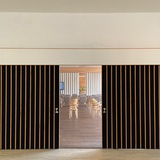Вестник постмодернизма,
выпуск №180
Кажется, что в отличие от других предметов интерьера, в руках затейников от дизайна вступавших в разные межвидовые связи, ковер всегда существовал как отдельный предмет. По крайней мере, до тех пор, пока на этот функционально-декоративный элемент не обратила внимание Бина Байтель, в 2006 г. закончившая Высшую архитектурную школу Франции с почетным дипломом архитектора (DPLG), а в 2010 г. представившая серию предметов «Under My Skin», в которую вошел гибрид светильника и вытекающего из него ковра натуральной кожи. Долгое время живя на Ближнем Востоке, Байтель хорошо изучила культуру региона, в том числе обычаи местных жителей использовать ковры для самых разных целей: от бытовых до религиозных, - и попыталась частично перенести эти обычаи в европейский контекст.
Примерно в то же время Байтель создала еще одну неожиданную комбинацию, журнальный столик-тумбу-ковер «Tarah» (tarah - араб. бросать на землю), а в 2012 г. похожий союз двух столиков и ковра под названием «Confluente» был удостоен первого приза на международном конкурсе гобеленистов в Обюссоне.
P.S. Раз уж мы заговорили о Бине Байтель, в качестве бонуса не можем не поделиться с вами еще одним любопытным гибридом ее авторства, светильником-зеркалом «Гримм» - см. изображения в комментариях.
———
Sunday Postmodernism,
issue No. 180
It seems that, unlike other types of furnishings that sometimes found themselves blended together into multifunctional hybrids courtesy of designers’ imagination, carpets had always been a category of their own, at least until Bina Baitel came around. After graduating from France’s most celebrated architectural school as an architect (DPLG) in 2006, Baitel founded her own design studio in 2008 and, another couple of years later, presented a line of furnishings called Under My Skin. Among other things, this collection featured an unexpected combination of a lamp and a genuine leather rug that looked like a spilled cup. Living in the Middle East for a long time, Baitel explored the local culture and habits, including the use of carpets for varied purposes, from mundane, “down-to-earth” tasks such as eating to religious rituals such as praying.
At around the same time, Baitel also designed Tarah (which is the Arabic for “tossing to the ground”), another outside-the-box hybrid that brought together a mattress and a coffee or bedside table. In 2012, a similar combination of two desks and a carpet called Confluente earned Baitel the first prize of the international tapestry competition in Aubusson.
P.S. Speaking of Baitel’s hybrids, we cannot help sharing yet another design of hers called Grimm - check out the comments down below.
(photos: Bina Baitel Studio, Louis Le Breton, Florian Kleinefenn, Daria Kraft, Mark Arrigo, cite-tapisserie.fr)
выпуск №180
Кажется, что в отличие от других предметов интерьера, в руках затейников от дизайна вступавших в разные межвидовые связи, ковер всегда существовал как отдельный предмет. По крайней мере, до тех пор, пока на этот функционально-декоративный элемент не обратила внимание Бина Байтель, в 2006 г. закончившая Высшую архитектурную школу Франции с почетным дипломом архитектора (DPLG), а в 2010 г. представившая серию предметов «Under My Skin», в которую вошел гибрид светильника и вытекающего из него ковра натуральной кожи. Долгое время живя на Ближнем Востоке, Байтель хорошо изучила культуру региона, в том числе обычаи местных жителей использовать ковры для самых разных целей: от бытовых до религиозных, - и попыталась частично перенести эти обычаи в европейский контекст.
Примерно в то же время Байтель создала еще одну неожиданную комбинацию, журнальный столик-тумбу-ковер «Tarah» (tarah - араб. бросать на землю), а в 2012 г. похожий союз двух столиков и ковра под названием «Confluente» был удостоен первого приза на международном конкурсе гобеленистов в Обюссоне.
P.S. Раз уж мы заговорили о Бине Байтель, в качестве бонуса не можем не поделиться с вами еще одним любопытным гибридом ее авторства, светильником-зеркалом «Гримм» - см. изображения в комментариях.
———
Sunday Postmodernism,
issue No. 180
It seems that, unlike other types of furnishings that sometimes found themselves blended together into multifunctional hybrids courtesy of designers’ imagination, carpets had always been a category of their own, at least until Bina Baitel came around. After graduating from France’s most celebrated architectural school as an architect (DPLG) in 2006, Baitel founded her own design studio in 2008 and, another couple of years later, presented a line of furnishings called Under My Skin. Among other things, this collection featured an unexpected combination of a lamp and a genuine leather rug that looked like a spilled cup. Living in the Middle East for a long time, Baitel explored the local culture and habits, including the use of carpets for varied purposes, from mundane, “down-to-earth” tasks such as eating to religious rituals such as praying.
At around the same time, Baitel also designed Tarah (which is the Arabic for “tossing to the ground”), another outside-the-box hybrid that brought together a mattress and a coffee or bedside table. In 2012, a similar combination of two desks and a carpet called Confluente earned Baitel the first prize of the international tapestry competition in Aubusson.
P.S. Speaking of Baitel’s hybrids, we cannot help sharing yet another design of hers called Grimm - check out the comments down below.
(photos: Bina Baitel Studio, Louis Le Breton, Florian Kleinefenn, Daria Kraft, Mark Arrigo, cite-tapisserie.fr)
4❤26🔥14👍10🤨3
group-telegram.com/midcenturymodern/16294
Create:
Last Update:
Last Update:
Вестник постмодернизма,
выпуск №180
Кажется, что в отличие от других предметов интерьера, в руках затейников от дизайна вступавших в разные межвидовые связи, ковер всегда существовал как отдельный предмет. По крайней мере, до тех пор, пока на этот функционально-декоративный элемент не обратила внимание Бина Байтель, в 2006 г. закончившая Высшую архитектурную школу Франции с почетным дипломом архитектора (DPLG), а в 2010 г. представившая серию предметов «Under My Skin», в которую вошел гибрид светильника и вытекающего из него ковра натуральной кожи. Долгое время живя на Ближнем Востоке, Байтель хорошо изучила культуру региона, в том числе обычаи местных жителей использовать ковры для самых разных целей: от бытовых до религиозных, - и попыталась частично перенести эти обычаи в европейский контекст.
Примерно в то же время Байтель создала еще одну неожиданную комбинацию, журнальный столик-тумбу-ковер «Tarah» (tarah - араб. бросать на землю), а в 2012 г. похожий союз двух столиков и ковра под названием «Confluente» был удостоен первого приза на международном конкурсе гобеленистов в Обюссоне.
P.S. Раз уж мы заговорили о Бине Байтель, в качестве бонуса не можем не поделиться с вами еще одним любопытным гибридом ее авторства, светильником-зеркалом «Гримм» - см. изображения в комментариях.
———
Sunday Postmodernism,
issue No. 180
It seems that, unlike other types of furnishings that sometimes found themselves blended together into multifunctional hybrids courtesy of designers’ imagination, carpets had always been a category of their own, at least until Bina Baitel came around. After graduating from France’s most celebrated architectural school as an architect (DPLG) in 2006, Baitel founded her own design studio in 2008 and, another couple of years later, presented a line of furnishings called Under My Skin. Among other things, this collection featured an unexpected combination of a lamp and a genuine leather rug that looked like a spilled cup. Living in the Middle East for a long time, Baitel explored the local culture and habits, including the use of carpets for varied purposes, from mundane, “down-to-earth” tasks such as eating to religious rituals such as praying.
At around the same time, Baitel also designed Tarah (which is the Arabic for “tossing to the ground”), another outside-the-box hybrid that brought together a mattress and a coffee or bedside table. In 2012, a similar combination of two desks and a carpet called Confluente earned Baitel the first prize of the international tapestry competition in Aubusson.
P.S. Speaking of Baitel’s hybrids, we cannot help sharing yet another design of hers called Grimm - check out the comments down below.
(photos: Bina Baitel Studio, Louis Le Breton, Florian Kleinefenn, Daria Kraft, Mark Arrigo, cite-tapisserie.fr)
выпуск №180
Кажется, что в отличие от других предметов интерьера, в руках затейников от дизайна вступавших в разные межвидовые связи, ковер всегда существовал как отдельный предмет. По крайней мере, до тех пор, пока на этот функционально-декоративный элемент не обратила внимание Бина Байтель, в 2006 г. закончившая Высшую архитектурную школу Франции с почетным дипломом архитектора (DPLG), а в 2010 г. представившая серию предметов «Under My Skin», в которую вошел гибрид светильника и вытекающего из него ковра натуральной кожи. Долгое время живя на Ближнем Востоке, Байтель хорошо изучила культуру региона, в том числе обычаи местных жителей использовать ковры для самых разных целей: от бытовых до религиозных, - и попыталась частично перенести эти обычаи в европейский контекст.
Примерно в то же время Байтель создала еще одну неожиданную комбинацию, журнальный столик-тумбу-ковер «Tarah» (tarah - араб. бросать на землю), а в 2012 г. похожий союз двух столиков и ковра под названием «Confluente» был удостоен первого приза на международном конкурсе гобеленистов в Обюссоне.
P.S. Раз уж мы заговорили о Бине Байтель, в качестве бонуса не можем не поделиться с вами еще одним любопытным гибридом ее авторства, светильником-зеркалом «Гримм» - см. изображения в комментариях.
———
Sunday Postmodernism,
issue No. 180
It seems that, unlike other types of furnishings that sometimes found themselves blended together into multifunctional hybrids courtesy of designers’ imagination, carpets had always been a category of their own, at least until Bina Baitel came around. After graduating from France’s most celebrated architectural school as an architect (DPLG) in 2006, Baitel founded her own design studio in 2008 and, another couple of years later, presented a line of furnishings called Under My Skin. Among other things, this collection featured an unexpected combination of a lamp and a genuine leather rug that looked like a spilled cup. Living in the Middle East for a long time, Baitel explored the local culture and habits, including the use of carpets for varied purposes, from mundane, “down-to-earth” tasks such as eating to religious rituals such as praying.
At around the same time, Baitel also designed Tarah (which is the Arabic for “tossing to the ground”), another outside-the-box hybrid that brought together a mattress and a coffee or bedside table. In 2012, a similar combination of two desks and a carpet called Confluente earned Baitel the first prize of the international tapestry competition in Aubusson.
P.S. Speaking of Baitel’s hybrids, we cannot help sharing yet another design of hers called Grimm - check out the comments down below.
(photos: Bina Baitel Studio, Louis Le Breton, Florian Kleinefenn, Daria Kraft, Mark Arrigo, cite-tapisserie.fr)
BY Mid-Century, More Than
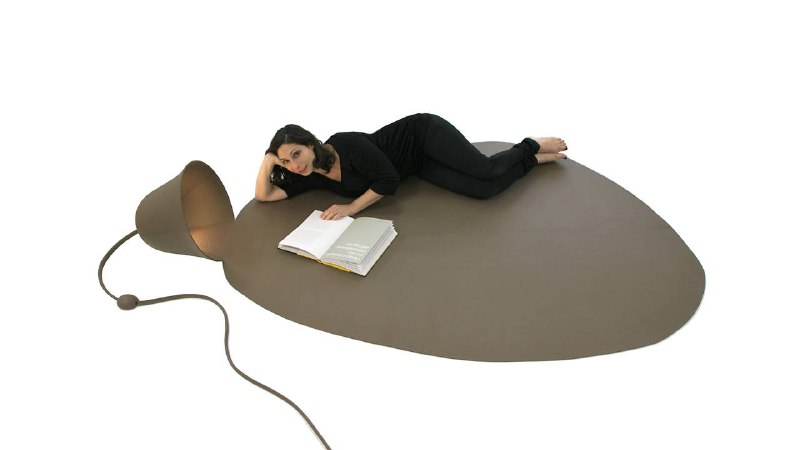

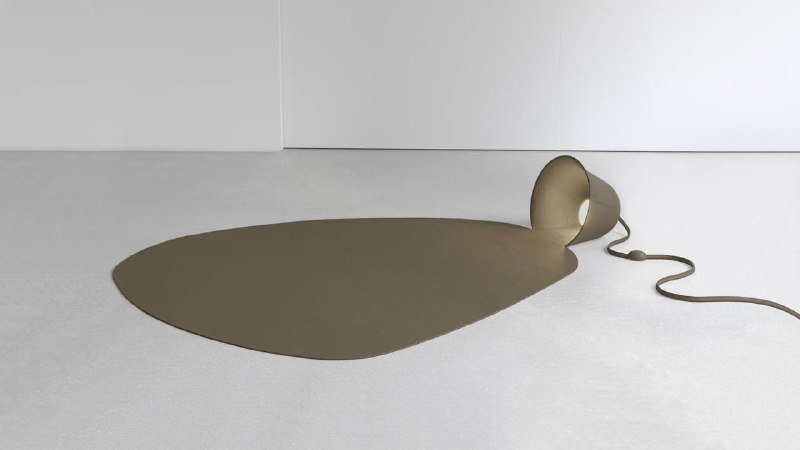
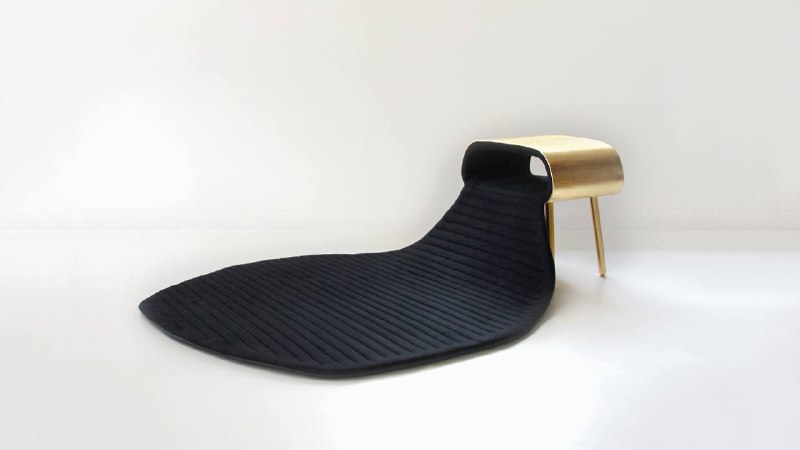
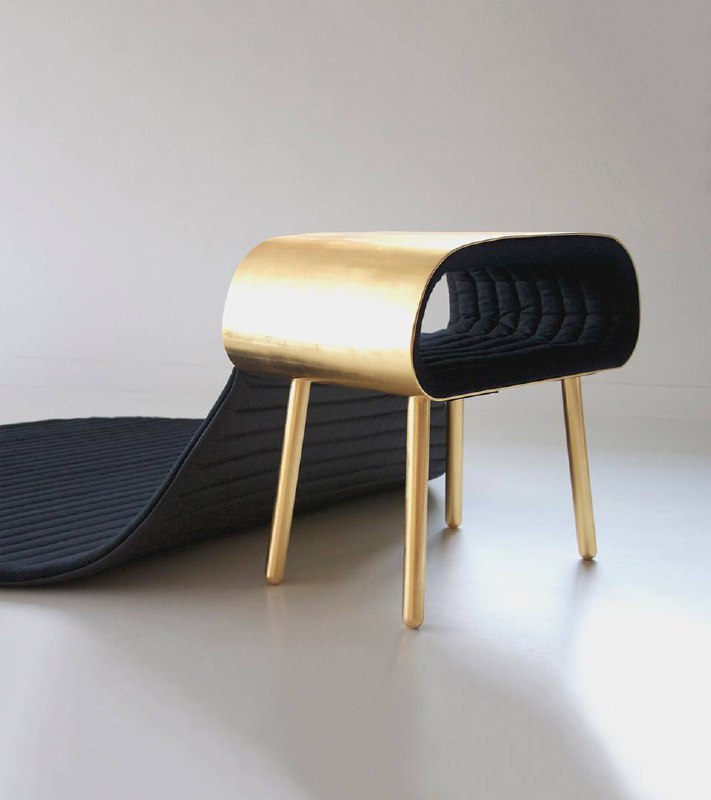

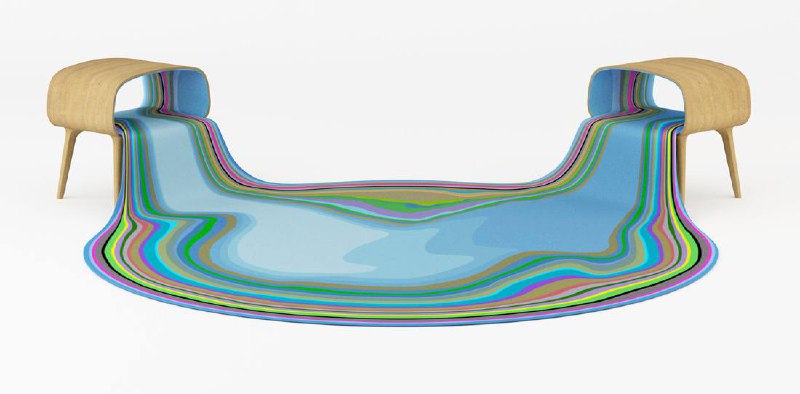
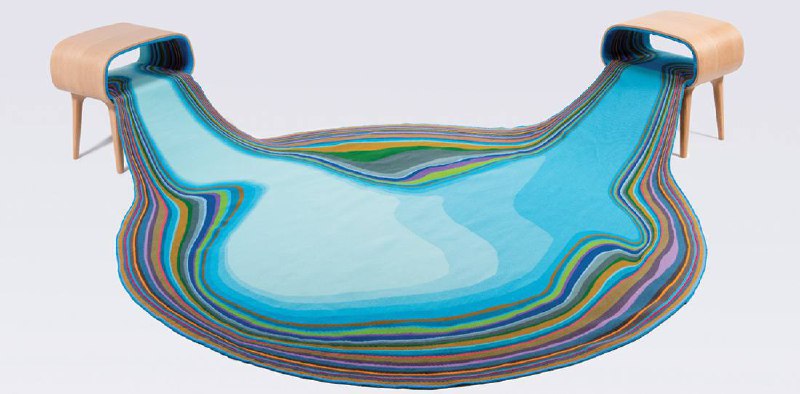
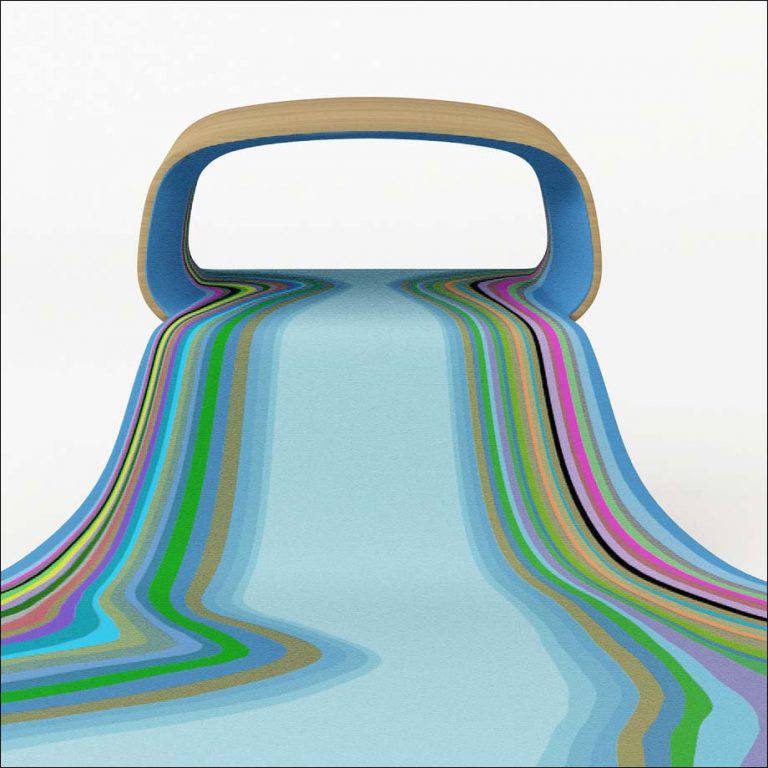

Share with your friend now:
group-telegram.com/midcenturymodern/16294
